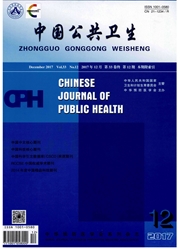

 中文摘要:
中文摘要:
目的探讨补体C3c及HBsAg-抗-HBs-补体C3c免疫复合物在乙型肝炎病毒(HBV)宫内传播机制中的作用。方法运用直接免疫荧光标记方法和免疫荧光双标记法分别检测母血乙肝表面抗原阳性胎盘组织中C3。及HBsAg-抗-HBs-补体C3c复合物的分布,在激光共聚焦显微镜下进行观察。结果在感染HBV的胎盘组织中,存在补体C3c和HBsAg-抗HBs-补体C3c复合物,位于胎盘滋养层细胞。结论HBV感染胎盘组织时,可能首先通过HBsAg-抗HBs-补体C3c复合物沉积在滋养层细胞表面与相应的IgG-Fc受体或补体成分C3结合,这对HBV病毒颗粒最终感染胎盘组织有着重要的意义。
 英文摘要:
英文摘要:
Objective To explore the role of C3c and HBsAg - anti - HBs - C3c complex in the HBV intrauterine infection. Methods Direct Immunofluorenscence technology and double - labeled immunofluorenscence assay were used to detect the C3c and HBsAg - anti - HBs - C3c complex in the HBsAg sero - positive placental tissues, respectively. Confocal laser scanning microscope was used. Results C3c and HBsAg - anti - HBs - C3c complex existed in the HBsAg sero - positive human placental tissues and 19ocated in the cytoplasm of trophoblasts. Conclusion It is important for HBV infection in the human placenta that HBsAg- anti - HBs - C3c complex attached to the cytoplasm of trophobasts and combined with the related IgG- Fc or C3c.
 同期刊论文项目
同期刊论文项目
 同项目期刊论文
同项目期刊论文
 期刊信息
期刊信息
